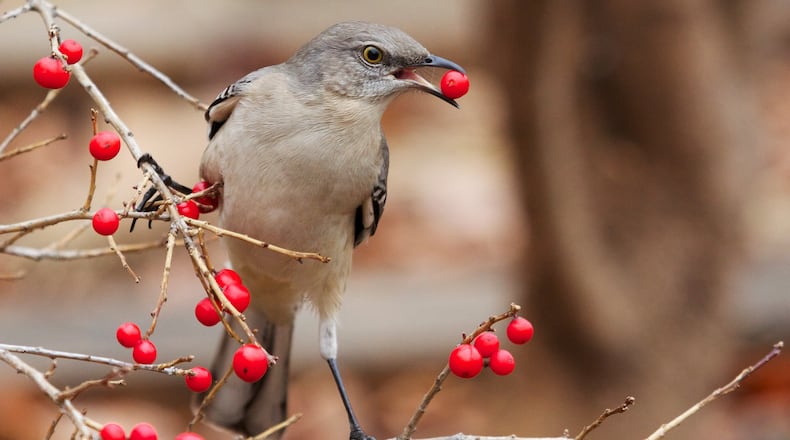Back in spring and summer, nearly all of Georgia’s songbird species were focused on raising offspring. That meant a huge need for proteins to spur their babies’ rapid growth.
Protein meant insects, and lots of them. A single pair of Carolina chickadees, for instance, had to find 6,000 to 9,000 caterpillars to raise their young during the season.
Now, with the arrival of autumn (it begins at 9:04 p.m. Thursday), most birds are shifting their diets to consume large amounts of energy-rich berries, fruits, nuts and seeds. The natural produce is loaded with carbohydrates and lipids, which the birds store as fat in their bodies.
Layers of fat provide vital energy to help birds survive winter. Even more crucial, however, fatty layers provide the energy to fuel the grueling migrations of most of Georgia’s 54 Neotropical songbirds that fly south for the winter.
“In Georgia‚ fruits are a vital resource for many bird species during their migration in autumn as well as for those that over-winter (in the state),” wrote two of the state’s bird experts, James Ferrari and Jerry Payne. They are authors of the booklet “The Ecology of Fruit-Eating Birds in Georgia.”
Not just every fruit, berry and nut will do, though. Native plants by far provide the most nutritious and healthiest foods for birds. Over a great span of time, Georgia’s native plants — and insects — have co-evolved with birds, meaning that birds have come to depend on the specific nutrition these plants provide.
Native plants whose fruits attract the greatest variety of birds in fall include flowering dogwood, American beautyberry, poison ivy, red mulberry, blackgum, serviceberry, black cherry, sugarberry, pokeberry and bayberry (or wax myrtle).
In all, more than 70 species of Georgia songbirds consume fruits of native or naturalized plants. Species with the broadest fruit diets include the American robin (which eats the fruits of 45 plants), Northern mockingbird (43) and Northern cardinal (32).
The plants, of course, benefit from all of this: They get their seeds distributed far and wide.
IN THE SKY: From David Dundee, Tellus Science Museum astronomer: The moon is in last quarter on Saturday. Rising in the east are Venus, shortly before sunrise; Mars, just before midnight; Jupiter, at sunset; and Saturn (high), just after dark.
Charles Seabrook can be reached at charles.seabrook@yahoo.com.
About the Author
Keep Reading
The Latest
Featured


